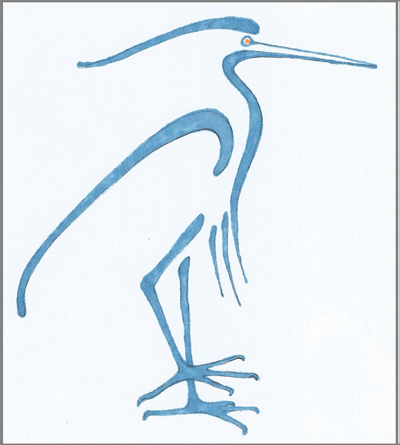Blue Heron Acupuncture & Herbs offers acupuncture appointments and herbal consultations. During this first appointment we will discuss the frequency of follow-up appointments. The following table outlines the differences between the types of appointments:
| Acupuncture | Herb | |
| Cost
(starting 1/1/2024) |
|
|
| Duration |
|
|
| Payment | Cash, Check, Credit Card
(3% fee on all credit card charges) |
Cash, Check, Credit Card
(3% fee on all credit card charges) |
| Insurance | Request payment upfront; if known to cover acupuncture can supply invoice or send electronic claim if no pre-authorization required | Request payment upfront; Insurance does not cover |
| Environment | Individual private room | Individual private room |
| Services | All | Only discussion and physical exam |
| Schedule | See schedule online | See schedule online |
Services
In Chinese medicine ill health results from Qi that is not flowing through the body as it should. There are many ways the flow of Qi can be impaired. For example, acid reflux in Chinese medicine is interpreted as the Qi related to the Stomach going in the wrong direction. Stuck Qi is at the root of many health problems. The goal of Chinese medicine is to uncover the root (or roots as there is often more than one) of what is causing the qi to flow improperly. Using tools like acupuncture, moxabustion, acupressure, gua sha and herbal therapy, Lauren Mund, L Ac, Dipl OM helps your body re-establish its proper flow of Qi which results in your return to health and well-being.
Here are brief definitions of the services Lauren provides in her treatments:
- Acupuncture is the practice of inserting hair-thin sterile disposable needles into the skin at specific points on the body. Through observation and practice over thousands of years, the Chinese discovered how Qi moves through the human body along certain lines called channels or meridians. Think of how water wells up from springs and flows into rivers that in turn flow into oceans and you have an idea of how Qi flows through the human body. During an acupuncture treatment needles are typically placed on the back or abdomen, below the elbows and knees, on the scalp or in the ears depending on what channels of energy need treatment. Each acupuncture point influences different physical, emotional, mental and spiritual aspects of a person. The art of the acupuncturist is to determine which point on what channel is most appropriate to address an individual’s needs.
- Moxabustion refers to the practice of burning mugwort leaf to warm and increase Qi flow at a point on an acupuncture channel. The mugwort can either be placed directly on the skin or on an acupuncture needle as well as used in stick form that is lit and waved over the acupuncture point (without touching the skin).
- Acupressure is similar to acupuncture except that instead of using a needle to stimulate a point, the practitioner applies pressure manually with either a hand or hand-held tool. Often entire lengths of a channel are manually manipulated to move the Qi.
- Gua sha is a form of scraping with a hand-held tool to stimulate the flow of Qi along a channel. ‘Sha’ is the red temporary skin rash that results from successful gua sha.
- Chinese herbal therapy involves identifying an individual’s patterns of disharmony (of not just improper Qi flow, but of other aspects of being like blood and body fluids) using the principles of Chinese medicine. Once an individual’s patterns of disharmony are identified, the Chinese herbalist creates a combination of herbs or uses an herbal formula previously developed in China to address the patterns of disharmony and help the body return to health.



